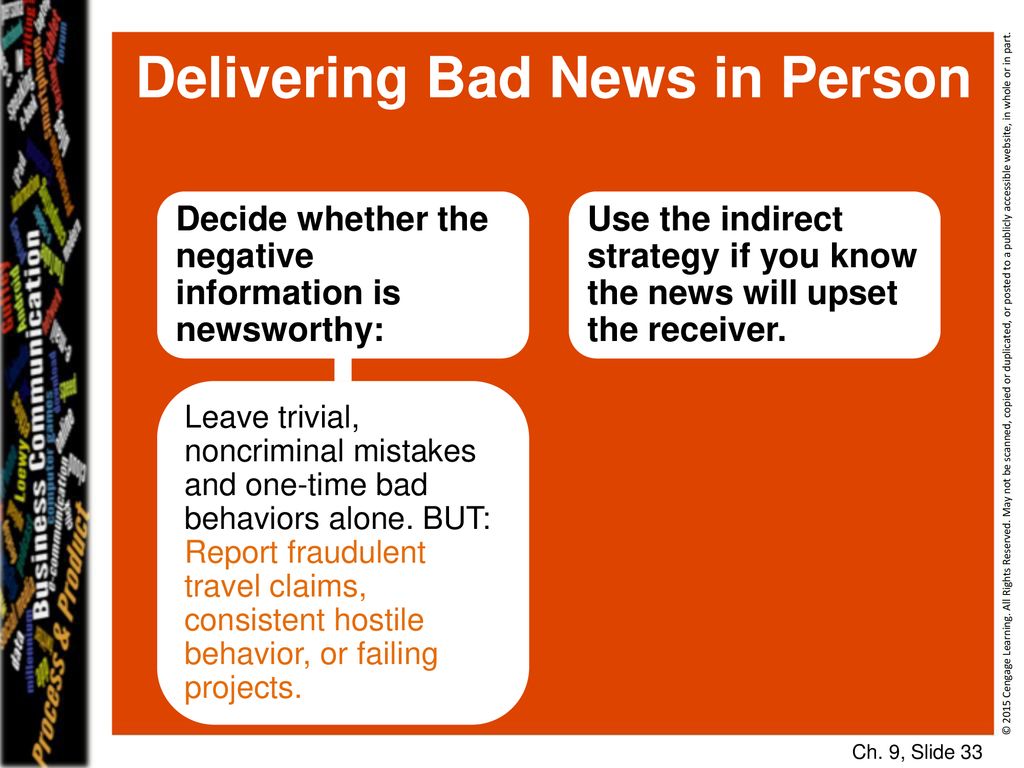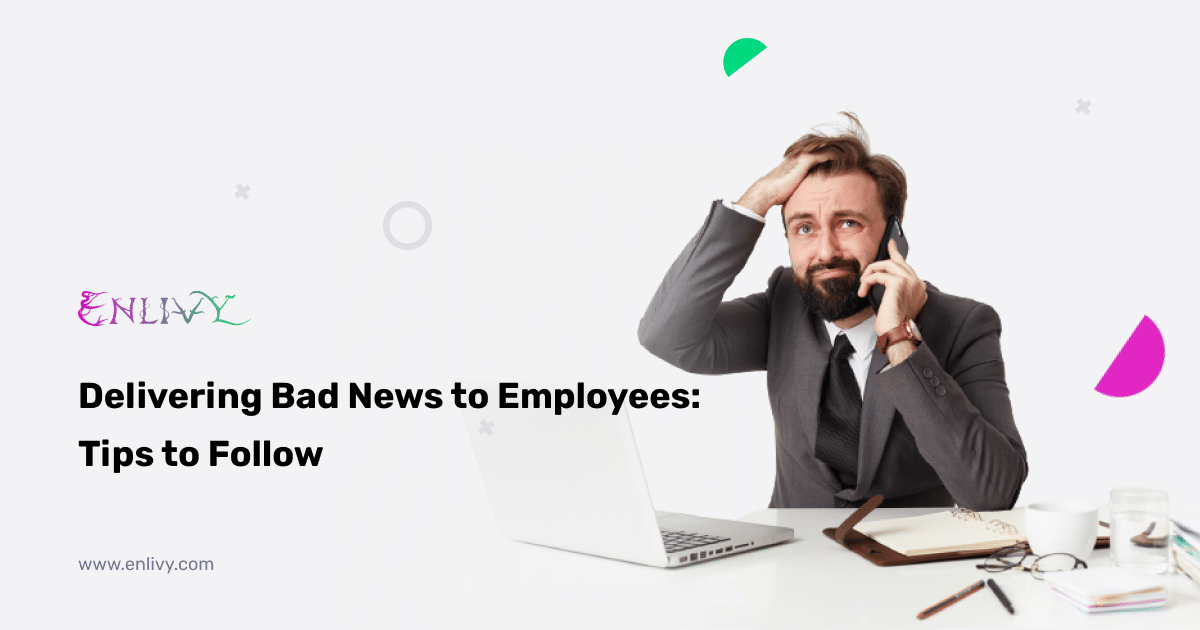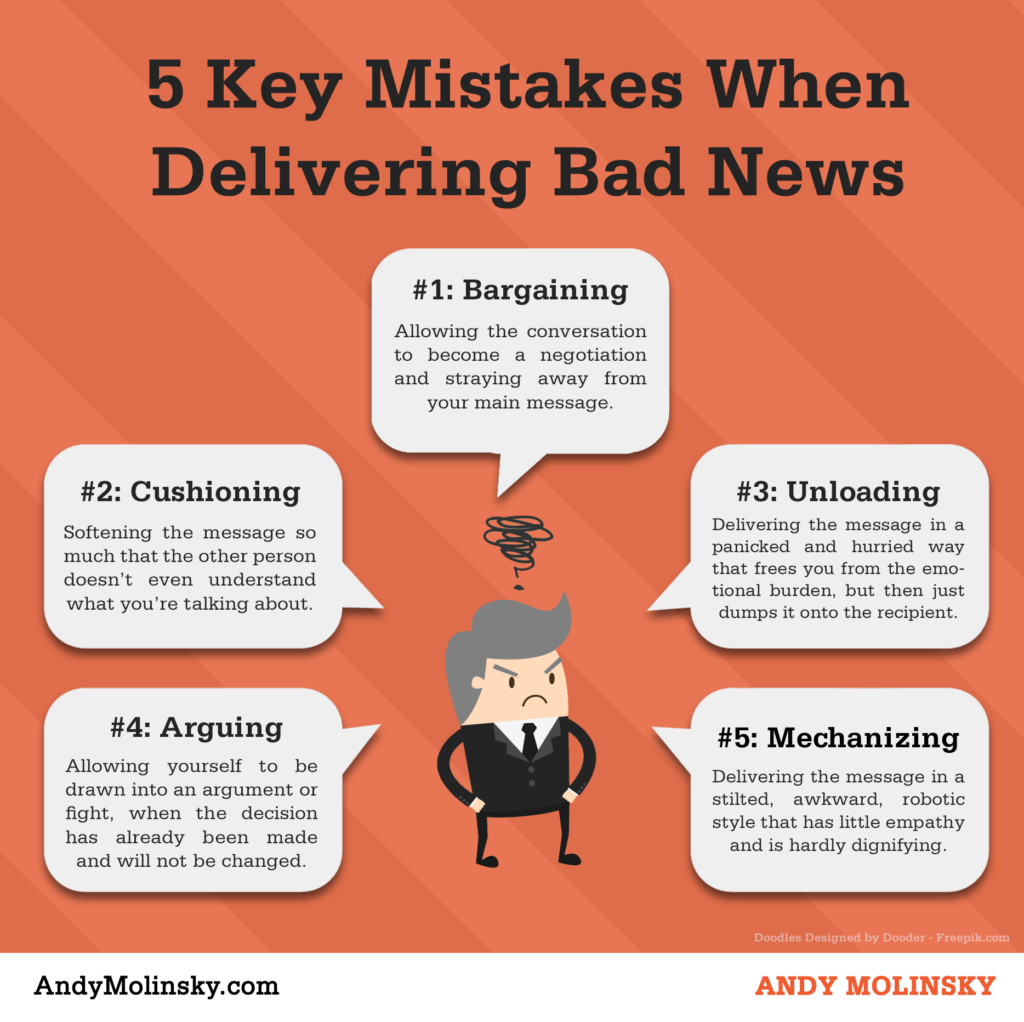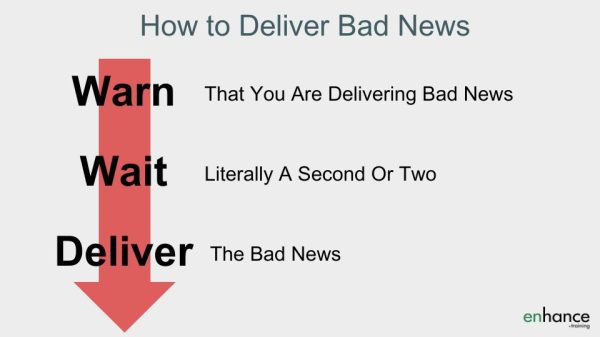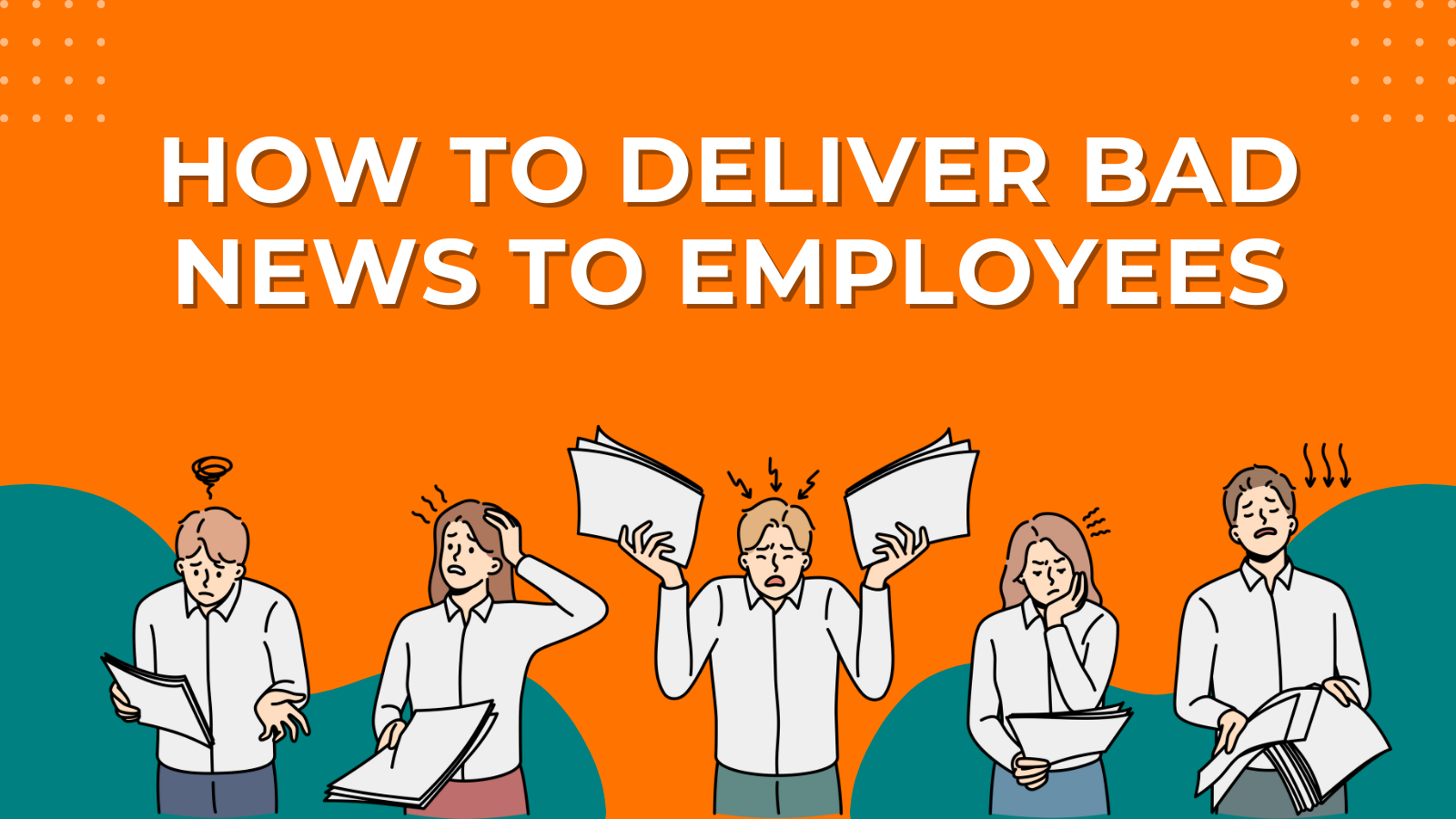What Is An Advantage Of Delivering Bad News In Person

Breaking: Delivering bad news face-to-face offers crucial advantages over digital methods, fostering trust and enabling immediate emotional support.
Despite the discomfort, experts emphasize that in-person delivery allows for nuanced communication and a personalized response, mitigating potential misunderstandings and fostering stronger relationships.
The Power of Presence: Why In-Person Matters
When delivering difficult news, the "who, what, where, when, why, and how" are all amplified by physical presence. It allows the deliverer to gauge the recipient's immediate reaction.
A study by the University of Michigan found that individuals receiving negative feedback in person reported feeling more respected, even if the message itself was unpleasant.
This is because in-person interaction allows for immediate clarification and the opportunity to offer genuine empathy, a key factor in softening the blow of the news.
Building Trust Through Tough Conversations
Delivering bad news in person signals a commitment to transparency and accountability. It shows respect for the recipient's feelings and acknowledges the significance of the situation.
According to Harvard Business Review, leaders who deliver bad news face-to-face are perceived as more trustworthy and courageous, even if the message is unpopular.
This builds stronger relationships in the long run, especially in professional settings or personal relationships where open communication is vital.
Mitigating Misunderstandings and Providing Support
Written communication can easily be misinterpreted, leading to further distress and confusion. An in-person conversation allows for real-time clarification and correction of any misunderstandings.
"Non-verbal cues", such as body language and facial expressions, play a crucial role in understanding the emotional impact of the news. This helps the deliverer adjust their approach and offer appropriate support.
Furthermore, being present allows you to directly address the recipient’s concerns and answer questions, preventing further anxiety or speculation.
Examples Where In-Person Delivery Excels
Consider situations like job terminations, medical diagnoses, or personal relationship endings.
SHRM (Society for Human Resource Management) advises managers to deliver termination news in person to ensure clarity and to provide an opportunity for the employee to ask questions and receive support.
Similarly, doctors are encouraged to deliver serious medical diagnoses face-to-face, as this allows for a more compassionate and supportive interaction.
Considerations and Exceptions
While in-person delivery is often preferred, there are exceptions. Safety concerns, geographical limitations, or the recipient's express preference for an alternative method may necessitate remote communication.
However, even in these cases, efforts should be made to maintain a personal touch, such as a video call or a follow-up phone conversation.
It's about choosing the medium that balances the need for clarity and empathy with the practical constraints of the situation.
Conclusion: Navigating Difficult Conversations with Empathy
In conclusion, while never easy, delivering bad news in person provides a crucial advantage in fostering trust, mitigating misunderstandings, and offering immediate emotional support.
Prioritizing face-to-face communication, where feasible, demonstrates respect and accountability.
Ongoing research continues to explore best practices for delivering difficult messages effectively and compassionately.


